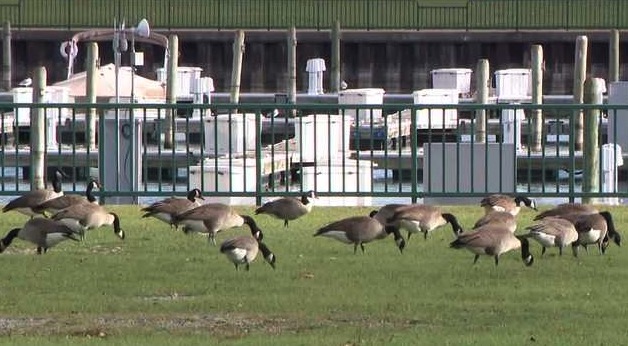Warmer weather confusing birds in Wisconsin

The unusually warm fall is causing some migratory birds to extend their summer vacation in southeast Wisconsin rather than beginning their journey south as they typically would by now.
By Gino Recchia
Click here for updates on this story
BAYSIDE, Wisconsin (WISN) — The unusually warm fall is causing some migratory birds to extend their summer vacation in southeast Wisconsin rather than beginning their journey south as they typically would by now.
At the Schlitz Audubon Nature Center, birds of various species continue to feast and rest as the mild weather offers them more time with an abundance of food and water sources.
“This fall, we are still noticing things like eastern bluebirds and American robins sticking around,” said Tom Finley, the director of learning at the nature center.
While food availability is critical, Finley explained that the delay isn’t a cause for concern. Thanks to a warmer October, which averaged five degrees above the normal temperature of 53 degrees Fahrenheit, insects and open water remain plentiful, providing these birds with resources to support them during their extended stay.
“As long as their food is available, which in their case would be insects, they’re going to be fine here,” Finley said
Interestingly, not all birds are affected by warmer temperatures alone. For many, migration timing is influenced by “photoperiod” or the length of daylight.
Species sensitive to this cue, such as the Sandhill Crane and various songbirds, have already migrated south, signaling that some species are moving as expected.
Geese, on the other hand, remain active in the region, gathering in large flocks in farm fields across the area.
“Now that the crops have been harvested, you might see flocks of hundreds and hundreds of Canada geese in local farm fields. We’re seeing them practicing their flying all throughout our region that they haven’t left yet,” Finley observed.
Though the warmer weather has delayed the migration of certain species, scientists and experts, including those at the Schlitz Audubon Nature Center, emphasize that there’s no long-term impact on bird populations.
“It brings greater joy to all of us that spend time outside to know that these animals, we share the world with them and that they help us appreciate being here,” Finley reflects.
As these migratory birds linger a bit longer than usual, new winter visitors are arriving.
Dark-eyed juncos, for example, are making their way down from Canada to call Southeast Wisconsin home for the winter.
For bird watchers and nature enthusiasts, it’s a unique time to see a variety of seasonal species, each adding life to the landscape.
Please note: This content carries a strict local market embargo. If you share the same market as the contributor of this article, you may not use it on any platform.
